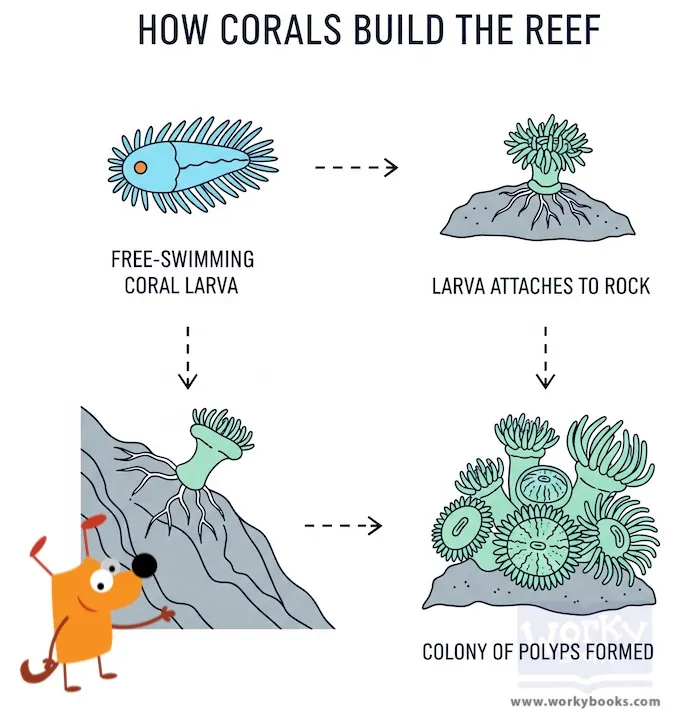How Corals Build the Reef — Reading Comprehension
Grades
- 2
- 3
- 4
Standards
- RI.3.8
- RI.4.8
PRINT+DIGITAL RESOURCE
This learning resource is available in interactive and printable formats. The interactive worksheet can be played online and assigned to students. The Printable PDF version can be downloaded and printed for completion by hand.
About This Reader
This passage explains the fascinating process of how coral polyps build the Great Barrier Reef. It details the life cycle of coral, from free-swimming larvae to colony formation. The text describes how polyps secrete calcium carbonate skeletons, gradually building up the reef structure over thousands of years. It emphasizes the slow nature of reef formation and the importance of conservation efforts. The passage uses the analogy of underwater cities to illustrate the complex ecosystem created by corals. Keywords: coral polyps, reef formation, calcium carbonate, marine ecosystem, coral conservation, Great Barrier Reef, underwater cities.
Perfect For:
👩🏫 Teachers
- • Reading comprehension practice
- • Auto-graded assessments
- • Literacy skill development
👨👩👧👦 Parents
- • Reading practice at home
- • Comprehension improvement
- • Educational reading time
🏠 Homeschoolers
- • Reading curriculum support
- • Independent reading practice
- • Progress monitoring
Reading Features:
📖
Reading Passage
Engaging fiction or nonfiction text
❓
Comprehension Quiz
Auto-graded questions
📊
Instant Feedback
Immediate results and scoring
📄
Printable Version
Download for offline reading
🔊
Read Aloud
Voice-over with word highlighting

















